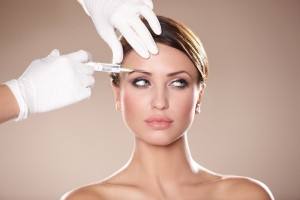Are sun spots on your skin becoming unwelcome reminders of aging? Today there are treatments available that can help you get rid of them.
Sun spots usually start appearing after the age of 30 and are common in people with light skin. They start spreading more once you cross 50. Long hours or days spent in the sun during your early years are one of the most likely causes of sun spots.
While sunspots are medically harmless, many people seek to hide sun spots for cosmetic reasons.
Sun spots can occur both in males and females, but women are more likely to opt for a treatment to get rid of them. Today, a wide variety of remedies, including peels and laser therapy, are available to treat sun spots.
Laser treatments are one of the most effective. After the treatment it’s necessary to avoid the sun by wearing protective clothing and using sunscreens in order to prevent these spots from reappearing.
At the office of Dr. Mark Bishara and The Paragon Med Spa we want to teach patients about proper skincare and help them regain the healthy skin tone that they desire.
Join us this Fall and Winter for Skin Rejuvenation
- For those who want the best possible results before the holidays, purchase our Ultimate Laser 360 treatment; a combination of Fotofacial, skin tightening and laser resurfacing. $3,000 for 3 treatments or $1,100 for 1 treatment.
- For the time honored effective treatment for sun spots and discolorations, with the added benefit of eliminating broken capillaries, buy a package of 4 IPL Fotofacial treatments and get 2 FREE.
- To help you achieve that perfect glow try out our SkinCeuticals Chemical Peels. Prices range from $100-$250 depending on exact treatment
- Our VI Peel is a facial peel for ALL complexions. It helps improve the appearance of acne, unwanted pigmentation and melasma. It is the only peel of its kind to contain synergistic blend of TCA, Retin-A, Salicylic Acid, Phenol, and Vitamin C. It gives great results in as little as one treatment.
- For people who want skin rejuvination with no downtime, smoother and softer skin and a reduction of fine lines tryMicrodermabrasion treatments. Buy 4 for $255
Call 817-473-2120 today to make an appointment
















